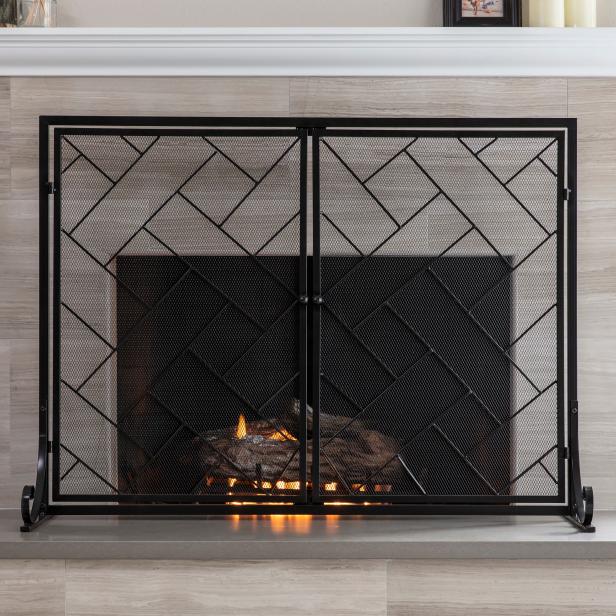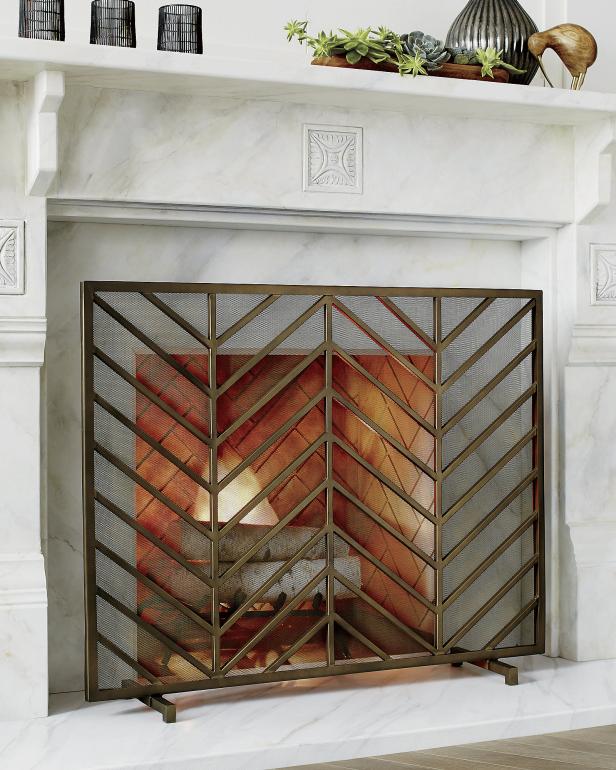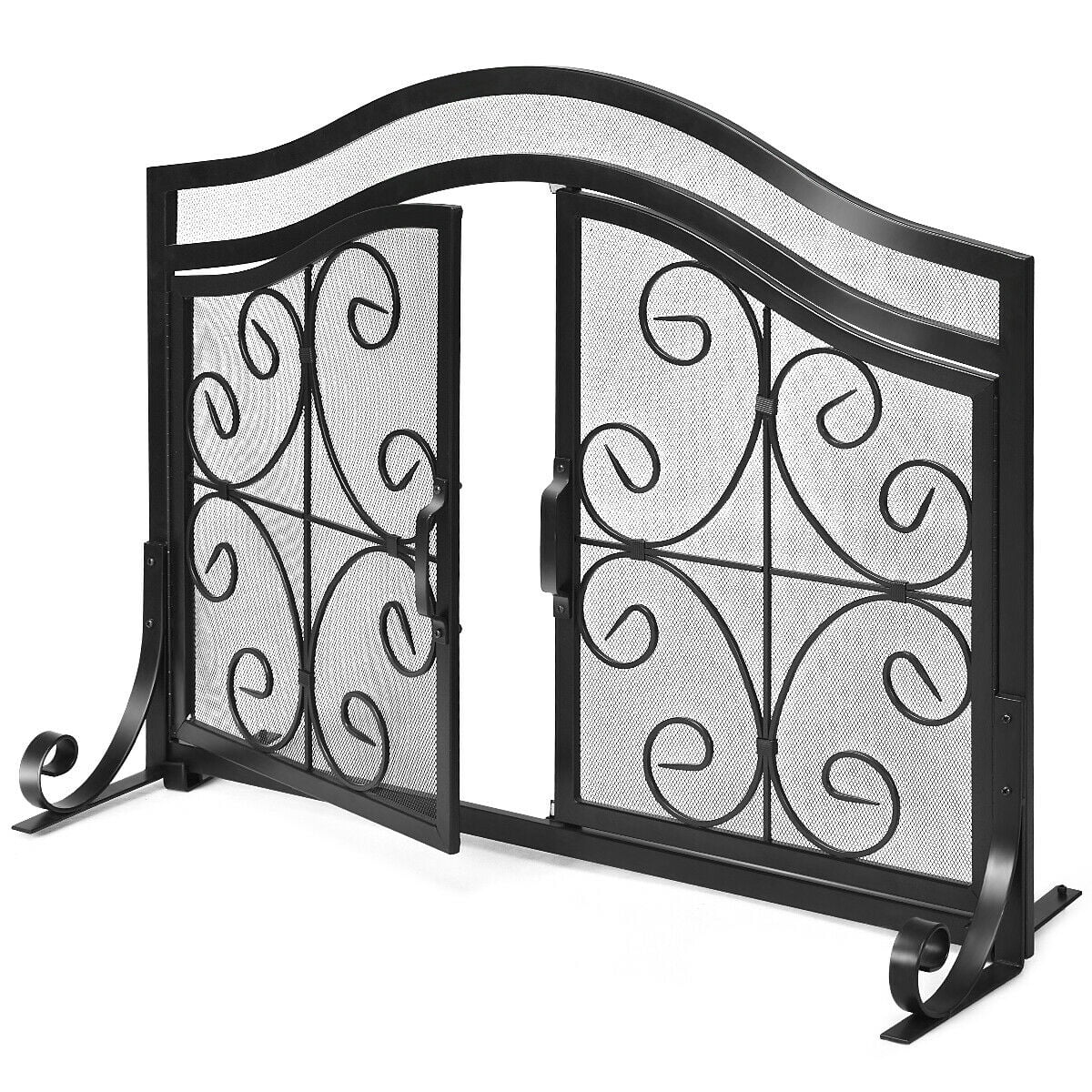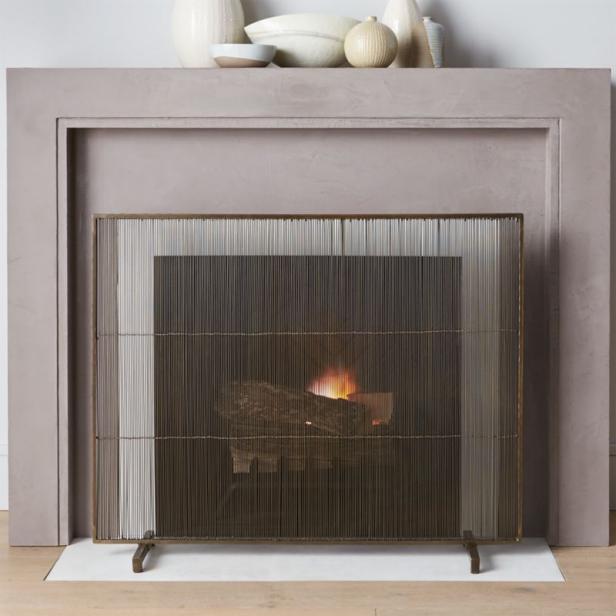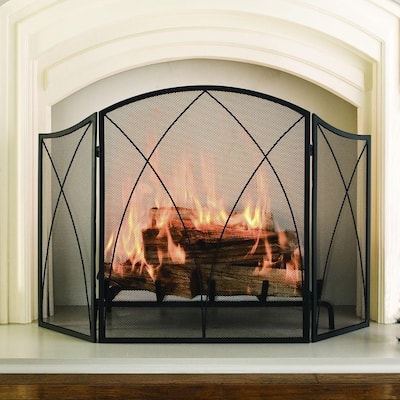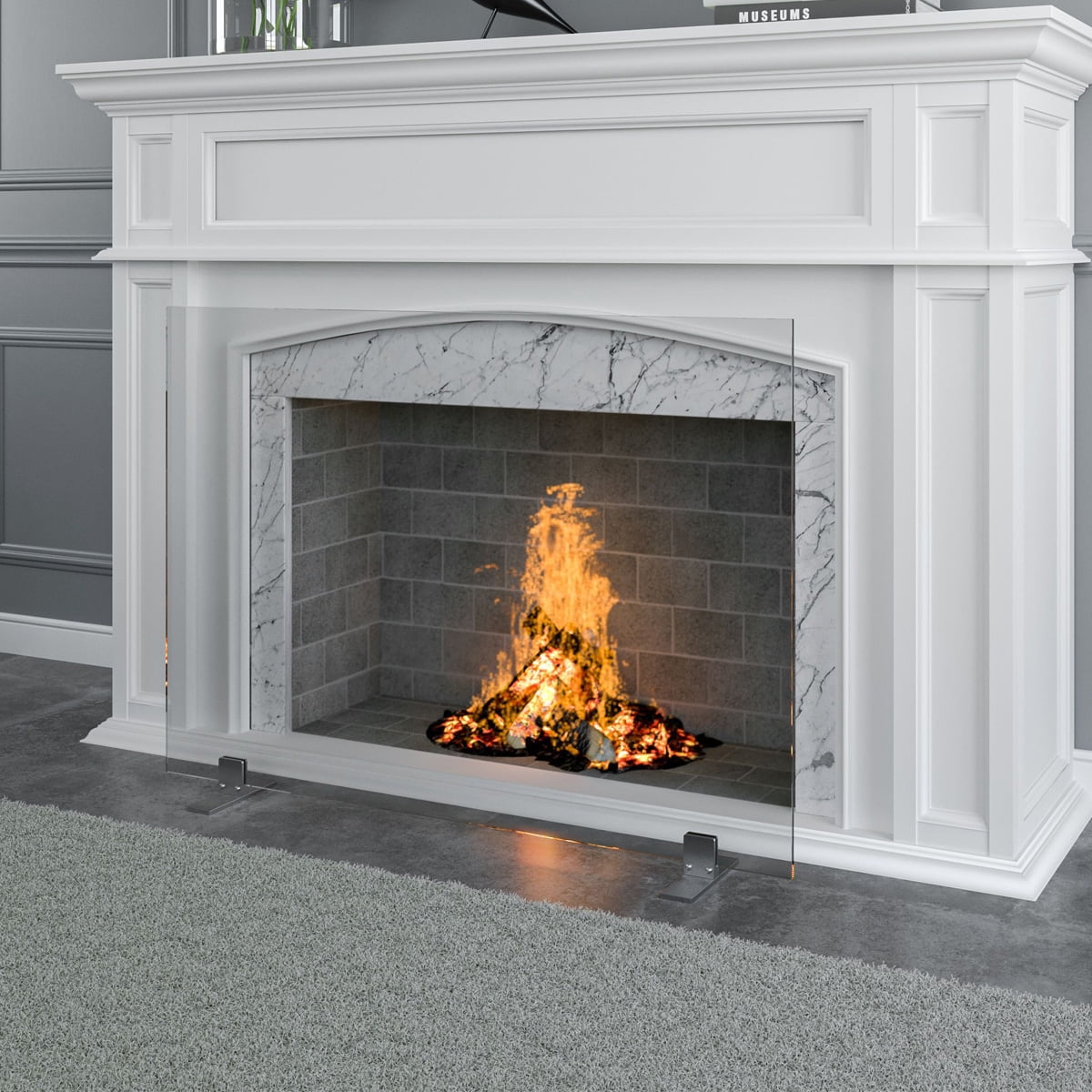A decorative free-standing fireplace screen is more than just a functional piece, it’s a stylish addition that elevates the look of any living space. These screens serve a dual purpose, protecting your home from stray embers while adding a touch of elegance to your fireplace. Whether you prefer classic wrought iron designs or modern minimalist styles, there’s a screen to match every decor. Today, we will discuss the benefits, materials, design options, placement tips, maintenance, and how to choose the perfect screen for your home.
The Benefits of Using a Free-Standing Fireplace Screen
One of the biggest advantages of a free-standing fireplace screen is safety. Sparks and embers can easily escape from a burning fire, posing a risk to nearby furniture, carpets, and even people. A sturdy screen acts as a barrier, preventing accidents while still allowing you to enjoy the warmth and ambiance of the fire. Unlike built-in screens, free-standing versions are easy to move, making them a flexible choice for different setups.
Another benefit is the aesthetic appeal. Fireplace screens come in countless designs, from intricate scrollwork to sleek geometric patterns. They can complement your existing decor or become a statement piece on their own. If you’re looking to refresh your living room without a full renovation, swapping out an old screen for a new one is a simple yet effective update.
Free-standing screens also offer convenience. They don’t require permanent installation, so you can reposition or remove them as needed. This is especially useful if you use your fireplace seasonally or want to switch between an open hearth and a screened setup. Plus, many models fold for compact storage when not in use, saving space in smaller homes.
Materials Used in Fireplace Screens
Fireplace screens are made from various materials, each with unique benefits. Metal screens, such as wrought iron or steel, are the most common due to their durability and heat resistance. Wrought iron offers a classic, ornate look, while steel tends to be more modern and lightweight. Both materials can withstand high temperatures without warping, making them a reliable choice for frequent fireplace use.
For a more decorative touch, some screens incorporate glass or mesh panels. Tempered glass screens provide a clear view of the fire while blocking sparks, and they often feature etched or painted designs. Mesh screens, usually made from fine metal wire, allow heat to pass through while keeping debris contained. These options are ideal if you want both functionality and visual appeal.
Less common but equally stylish are screens made from brass, copper, or even ceramic. Brass and copper develop a natural patina over time, adding a rustic charm to your fireplace. Ceramic screens are rare but can be a striking choice for artistic, hand-painted designs. When selecting a material, consider both the look you want and how often you use your fireplace.

Choosing the Right Design for Your Space
The design of your fireplace screen should harmonize with your room’s overall style. Traditional homes often pair well with ornate, scroll-heavy screens in black or bronze finishes. These designs bring a timeless elegance that complements vintage furniture and classic architecture. If your decor leans more toward farmhouse or rustic, a simple wrought iron screen with minimal detailing might be the best fit.
Modern interiors call for cleaner lines and simpler shapes. Look for geometric patterns, matte finishes, or even bold colors if you want a contemporary feel. Some screens feature abstract cutouts or asymmetrical designs that make them stand out as art pieces. For a transitional space that blends old and new, a screen with a mix of classic and modern elements can tie everything together.
Don’t forget about size and proportion. A screen that’s too small won’t provide adequate protection, while one that’s too large can overwhelm the fireplace. Measure the opening of your hearth before shopping, and consider the height of the screen for your mantel. A well-proportioned screen enhances the fireplace’s appearance rather than distracting from it.
Where to Place Your Free-Standing Screen
Placement is key to both safety and visual appeal. The screen should sit close enough to the fireplace to catch sparks but not so close that it overheats. A good rule of thumb is to leave at least a few inches of space between the screen and the fire. If your fireplace has a raised hearth, make sure the screen’s legs are stable and won’t tip forward.
In open-concept rooms, consider how the screen looks from multiple angles. A double-sided design can be a great choice if the fireplace is visible from different parts of the house. For corner fireplaces, a curved or L-shaped screen may fit better than a straight one. Experiment with positioning to find the most practical and attractive setup.
If you have children or pets, stability is even more important. Look for screens with weighted bases or non-slip feet to prevent accidental knocks. Some models come with additional safety features like locking mechanisms or extra-tall panels to keep little hands away from the fire. Always prioritize function alongside aesthetics.
Maintaining Your Fireplace Screen
Regular cleaning keeps your screen looking its best. Metal screens can accumulate soot and dust, which can be wiped away with a damp cloth and mild soap. Avoid abrasive cleaners, especially on painted or polished finishes, as they can cause scratches. For glass panels, use a glass cleaner to maintain clarity and remove fingerprints or smoke residue.
If your screen has intricate detailing, a soft brush (like a toothbrush) can help reach tight spots. For brass or copper screens, occasional polishing restores shine and prevents tarnish from building up. Always check the manufacturer’s care instructions, as some finishes require specific cleaning methods to avoid damage.
Inspect your screen periodically for signs of wear, such as loose hinges or rust spots. Minor rust can often be treated with a metal primer and touch-up paint, but significant damage may mean it’s time for a replacement. Proper maintenance extends the life of your screen and ensures it remains both safe and stylish.
How to Select the Perfect Fireplace Screen
Start by assessing your needs. Do you prioritize safety, style, or both? If you have a busy household, durability and stability should be top considerations. For those who love to redecorate frequently, a versatile design that works with different color schemes might be ideal. Think about how often you use your fireplace, as heavy use calls for a sturdier material.
Next, match the screen to your fireplace’s dimensions. Measure the width, height, and depth of your hearth to ensure a proper fit. Many screens are adjustable, but custom sizes are also available for unusually shaped fireplaces. Don’t forget to check the screen’s height to your mantel or surrounding furniture.
Finally, consider your budget. Fireplace screens range from affordable basic models to high-end designer pieces. While it’s tempting to go for the cheapest option, investing in a well-made screen can save money in the long run by lasting longer and providing better protection. Look for reputable brands and read reviews to find the best value for your needs.
Can a free-standing fireplace screen fit any fireplace?
Most free-standing screens are adjustable or come in multiple sizes, making them suitable for a wide range of fireplaces. However, it’s important to measure your hearth’s dimensions before purchasing. If you have an unusually large or small opening, you may need a custom-sized screen. Some screens also come with extendable panels or folding designs to accommodate different widths. Always check the product specifications to ensure a proper fit for your specific fireplace setup.
Are fireplace screens only for wood-burning fireplaces?
While they’re most commonly used with wood-burning fireplaces, free-standing screens can also enhance gas or electric fireplaces. For gas fireplaces, they add a decorative touch and can help disguise the burner when not in use. Electric fireplaces don’t produce sparks, but a screen can still provide a traditional look. Just make sure the material is suitable for the heat output of your fireplace type, as some gas fires generate significant heat.
How do I clean a fireplace screen without damaging it?
For metal screens, a soft cloth with warm, soapy water is usually enough to remove soot and dust. Avoid harsh chemicals or steel wool, as these can scratch the finish. Glass panels can be cleaned with a standard glass cleaner. If your screen has intricate designs, a soft-bristle brush helps reach crevices. For brass or copper, use a specialized polish to maintain shine. Always dry the screen thoroughly to prevent water spots or rust.
Do fireplace screens block heat from the fire?
A well-designed screen allows heat to radiate into the room while blocking sparks. Mesh screens offer the least resistance to heat flow, while solid panels or glass may reduce it slightly. If maximizing heat output is a priority, look for a screen with a wide mesh or open design. However, the difference in warmth is usually minimal, and the safety benefits outweigh any slight reduction in heat.
Can I use a fireplace screen outdoors?
Yes, but you’ll need a screen specifically designed for outdoor use. These are typically made from weather-resistant materials like powder-coated steel or rust-proof metals. Outdoor screens should also have a sturdy base to withstand the wind. Regular indoor screens may not hold up to rain, humidity, or temperature fluctuations, so always check if the model you’re considering is rated for exterior use.
What’s the average lifespan of a fireplace screen?
With proper care, a high-quality fireplace screen can last for decades. Metal screens, especially those made from wrought iron or steel, are the most durable. The lifespan depends on how often you use your fireplace and how well you maintain the screen. Regular cleaning and occasional touch-ups (like repainting or polishing) can significantly extend its life. If you notice significant rust, warping, or loose fittings, it may be time for a replacement.
Small Fireplace Screen with Hinged Doors
Best Freestanding Fireplace Screens
Small Crest Flat Guard Fireplace Screen, Solid Wrought Iron Frame with Metal Mesh
Fireplace Screens – Fireplaces – The Home Depot
Barton 36″ x 27″ inch Panel Fireplace Screen Free Standing Decorative Tempered Glass Guard Fence Clear
Related Posts:
